Alternative Lawns - Thesis Project
Introduction
This is the case study for the Alternative Lawns project, my senior undergraduate graphic design project for my BFA in Graphic & Animation Design at Longwood University. The goal of this case study is to showcase the process and rationale of my Graphic & Animation Design (GAND) senior thesis project. This senior thesis project provides undergraduate students with the opportunity to spend a year working independently on a body of work centered around a subject of the student’s choice. The process of creating such a project involves visual design skills as well as research, writing, and communication skills. This project began in spring 2020 when preliminary research was done and a proposal was made. Progress continued with a halfway presentation in fall 2020, and the final project was presented in spring 2021 and subsequently displayed publicly to university members. Alternative Lawns is a project dedicated to encouraging homeowners to embrace alternative styles of lawns and start change in their own backyards. The project aims to educate about how traditional grass lawns can be harmful to the environment, provide information and resources for homeowners ready to make the change, and share the word through communities.Identifying the Problem
Students were expected to chose a senior thesis project topic that is both current and relevant to them. I initially made a list of several potential topics, including suicide prevention in teens, sustainable home gardening, and helping parents to understand and support their LGBTQ+ children. The topic I chose to do further research into was alternatives to grass lawns. Based on personal research into the downsides of grass lawns, I wanted to look into alternatives to traditional yard styles and compositions. What I discovered was that although grass lawns are harmful to both homeowners and local wildlife in numerous ways, very little information exists that is aimed at homeowners urging them to reconsider their choice of yard composition. This looked like the perfect opportunity for my project.Research & Early Drafts
The first step of the project involved researching the topic further to define the problem to be solved as precisely as possible. This step also involved creating personas. A fair amount of the research I found focused on urban gardening or “guerrilla gardening”, which was an option to tie in with alternative styles of lawns. However, I decided that including urban gardening as well as alternative lawns would be too broad of a topic, and decided to focus on styles of alternative lawns that are more homeowners association-friendly. In early design drafts, I stayed away from photographic imagery, but realized that viewers would need visual explanations of alternative lawns. My early designs were also not as friendly as I would have liked them to be.Visual System
The overall goal of the design was to appeal to adults of all ages and backgrounds with a friendly and inviting appearance. I knew from when I started this project that the color system would be an important part of the design. In the beginning I tried working with jewel tones and avoided using green, thinking it may compete with the images of lawns I would feature on the website. However, I realized that I needed to include a green in my color palette as I was representing nature. The final color scheme uses green, blue, and purple as its primary colors, with some light aqua and yellow-green as accent colors. The final logo is a simplified version of the original that features three rounded leaf-like shapes. I used these shapes elsewhere in the design, typically as container boxes, to create a sense of unity among all the different pieces. I chose the title and body typefaces, Museo and Montserrat, for their modern, friendly feel and easy readability. Both typefaces read well at large or small scale and when digital or printed, which was important as I knew I would be creating a variety of types of pieces in various sizes and media.Final Designs
The central piece of the project was the website I created that serves as a central hub of information. To support this, I also created several printed items that contain information and spread the word about Alternative Lawns. My final project includes: • Three 3.5” x 8” door hangers• Three 4” x 5” seed packets
• Two 3” x 8” quad-fold brochures
• Three 12” x 18” posters
• Six 18” x 12” yard signs
• A 6” x 8” informational booklet
• A fully functioning desktop- and mobile-compatible website
Reflection
Overall, I am please with how the project turned out and am proud of the work I put into it. However, although I feel that all the pieces of the Alternative Lawns project work well together to create a cohesive whole, there are still more pieces I would’ve liked to add to the project to flesh it out more. An early idea I worked with was a letter template that homeowners can personalize and send to their homeowners’ association asking for neighborhood rules regarding lawn restrictions to be changed. I was not able to include this as I struggled to find the best way to approach the letter. I would have liked to include a piece that achieved a similar goal if I had more time to fine-tune it. I also will admit that I feel that I did not spend enough time on this project as I should have dedicated to it. I lost track over the summer and fall, and thus most of the final work was done in the last few months of the project. Although I believe the designs actually benefited from this as it allowed me to reassess and change the earlier work I’d done, the research aspect of my project somewhat suffered. I was hoping to gather more detailed information, specifically about native Virginia plants that would work well in alternative lawns, but I did not end up having enough time for research that in-depth. Senior thesis design projects are created with the intention of possible having a second life after the student graduates. I have not yet reached out to groups who might be interested in using Alternative Lawns but I hope to do so after graduation, as it would be great to see my hard work being used for a good cause.View the Alternative Lawns website at https://alternativelawns.wixsite.com/alternativelawns


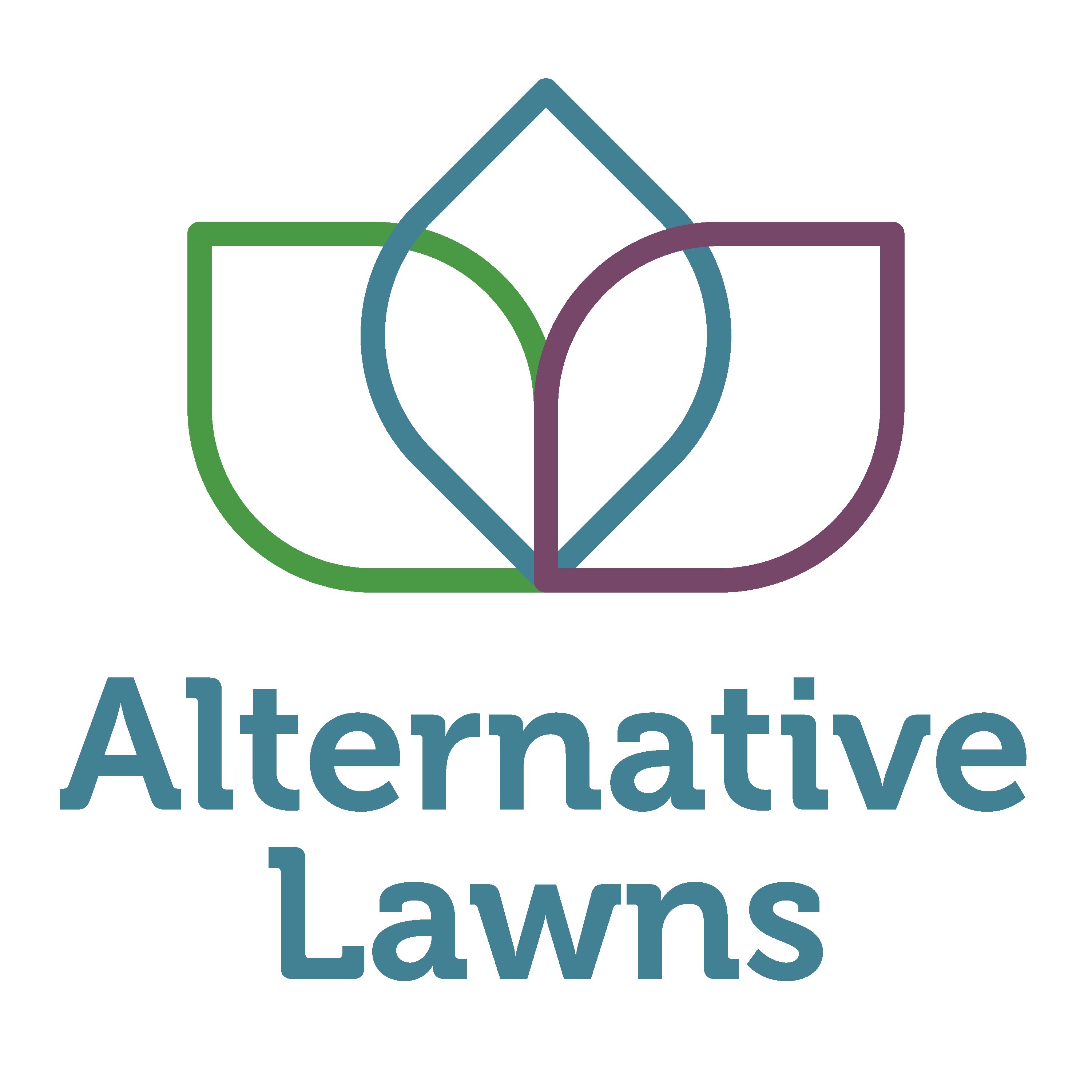
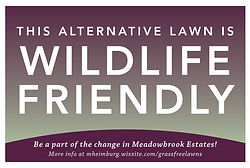
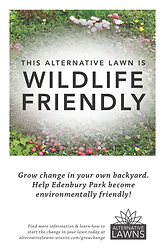
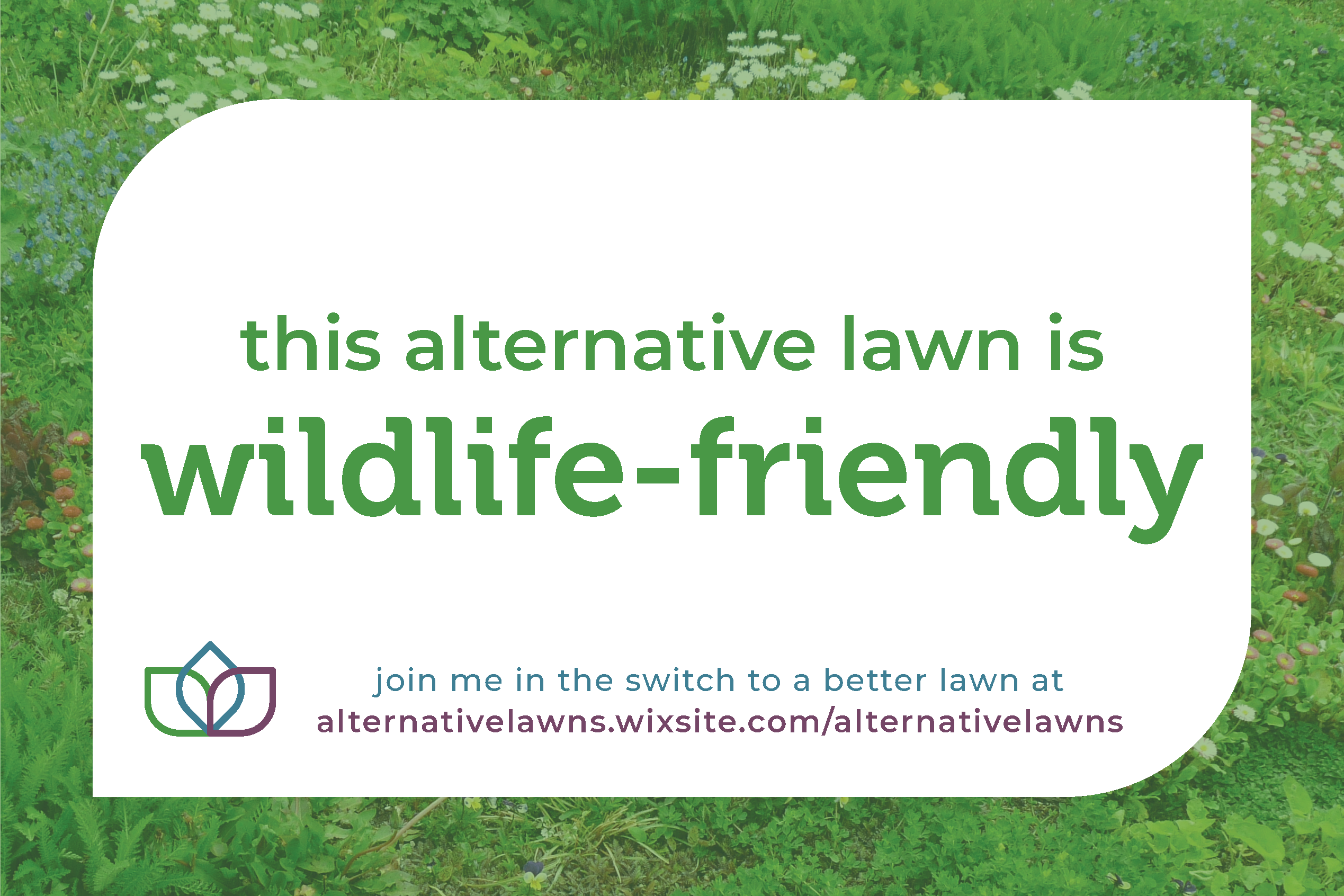
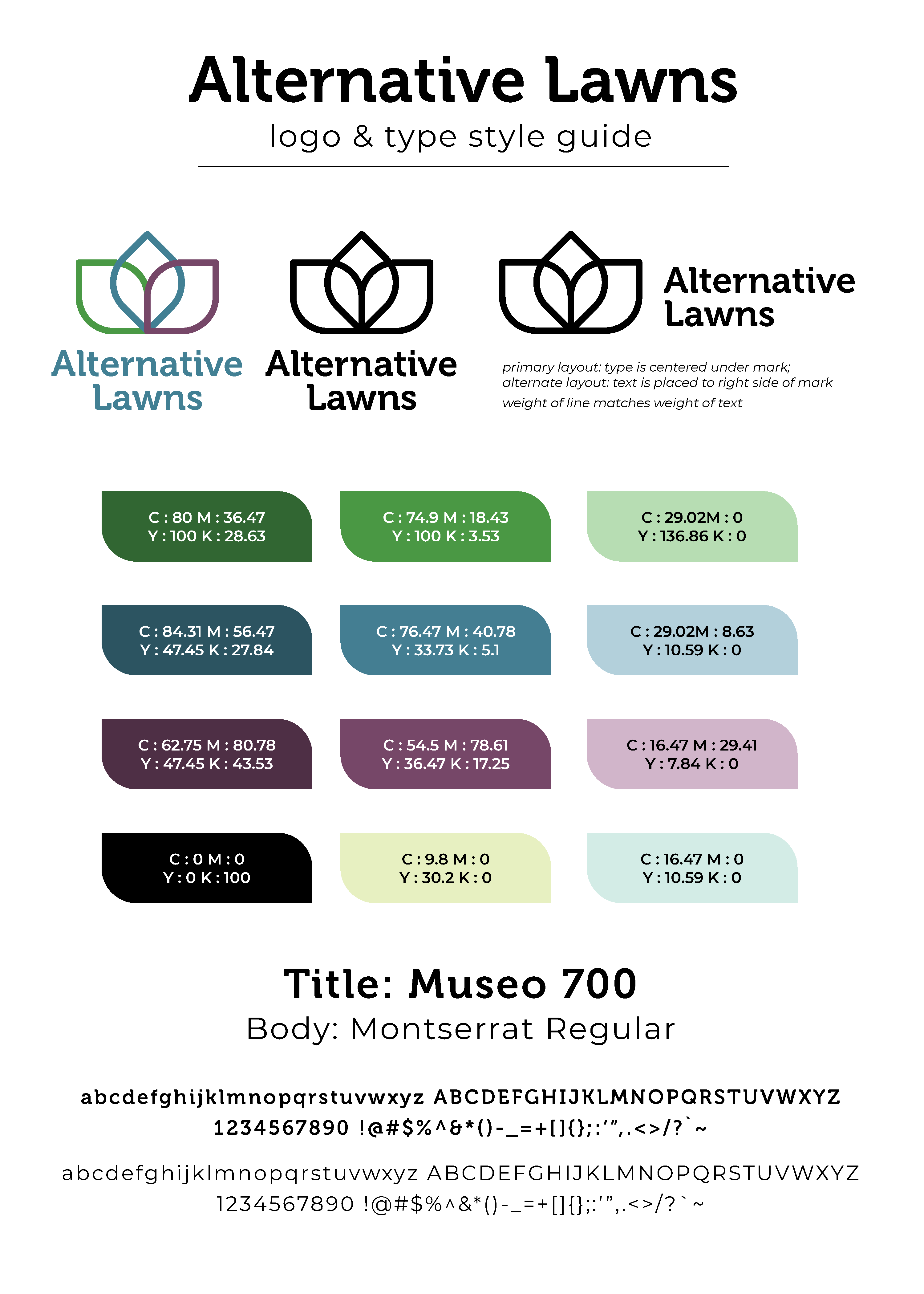

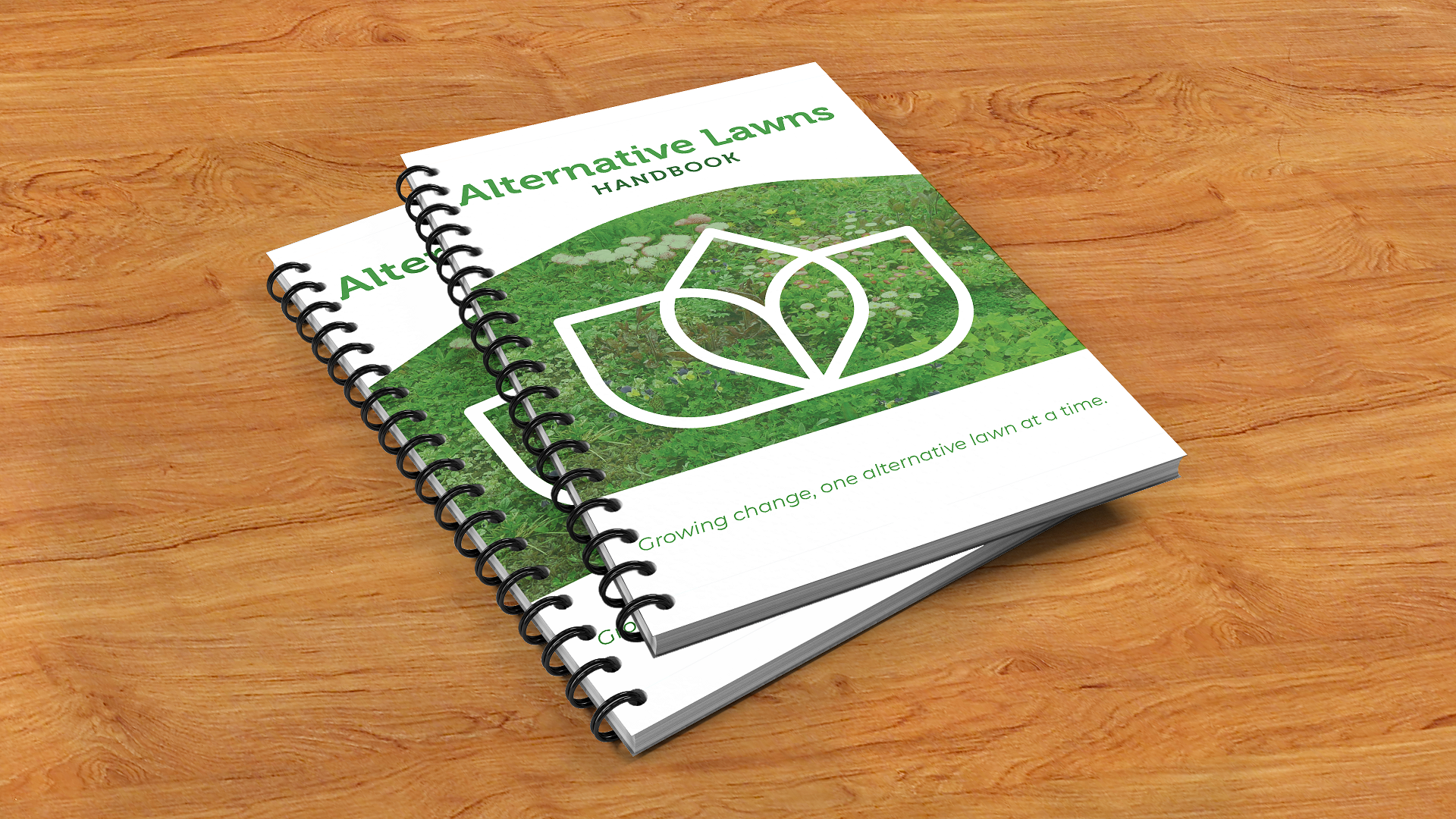
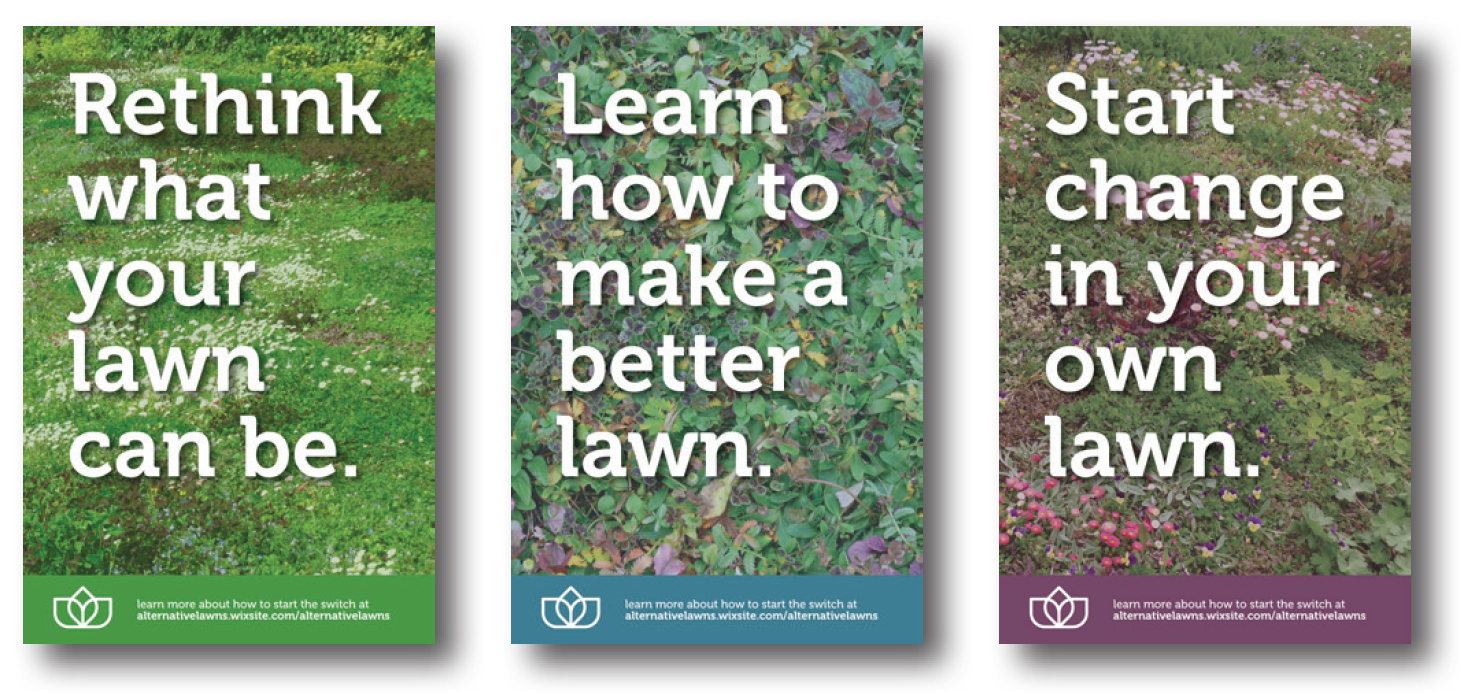
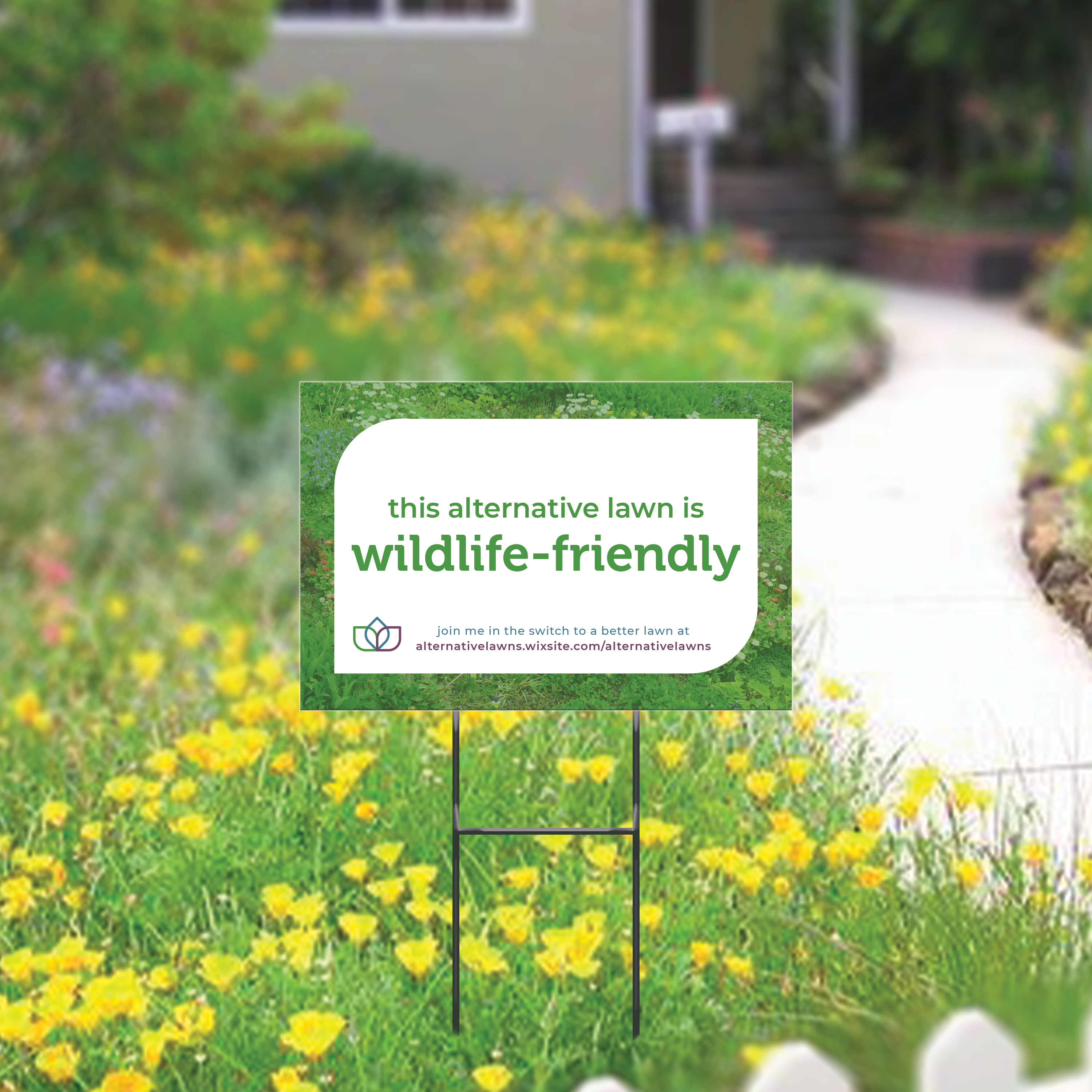
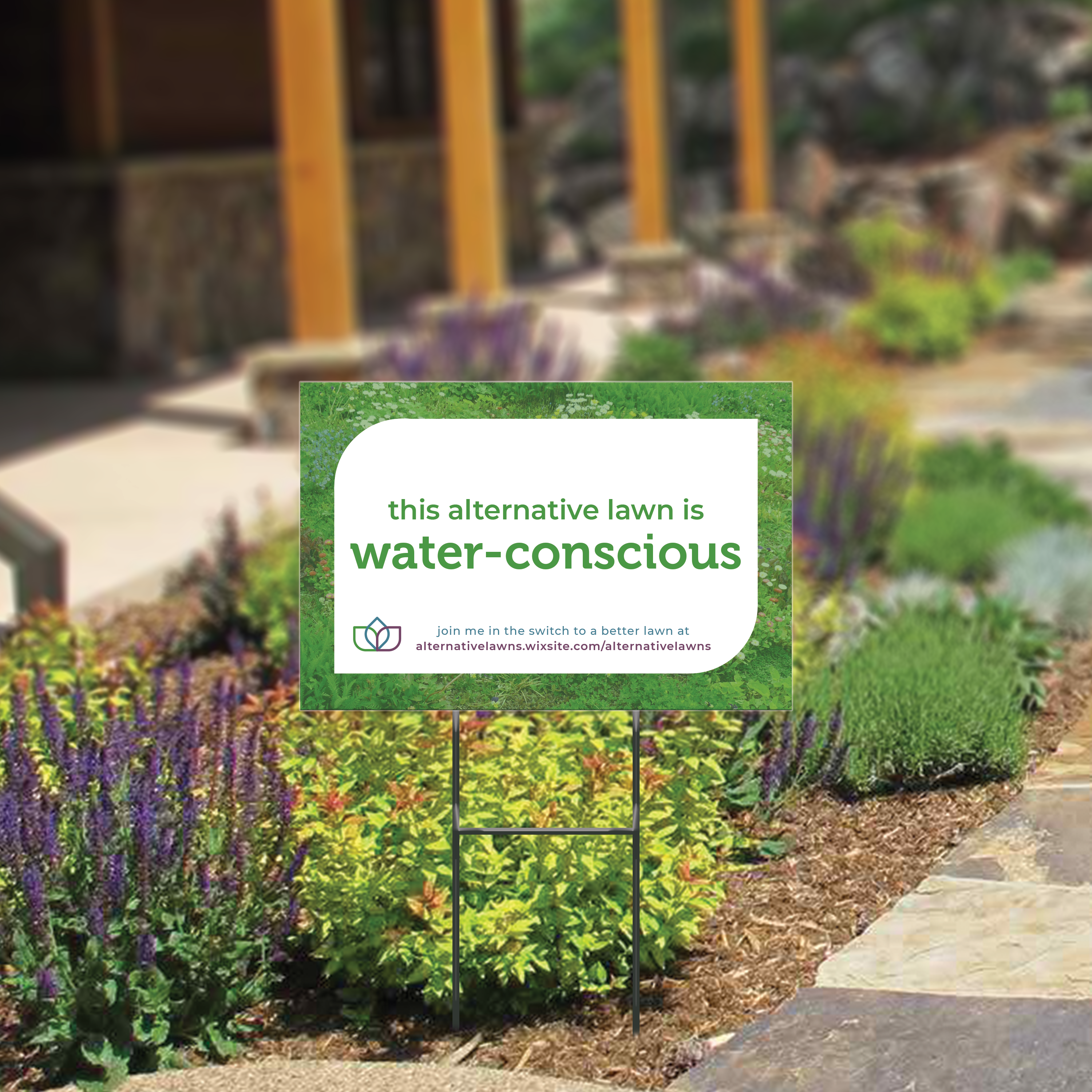

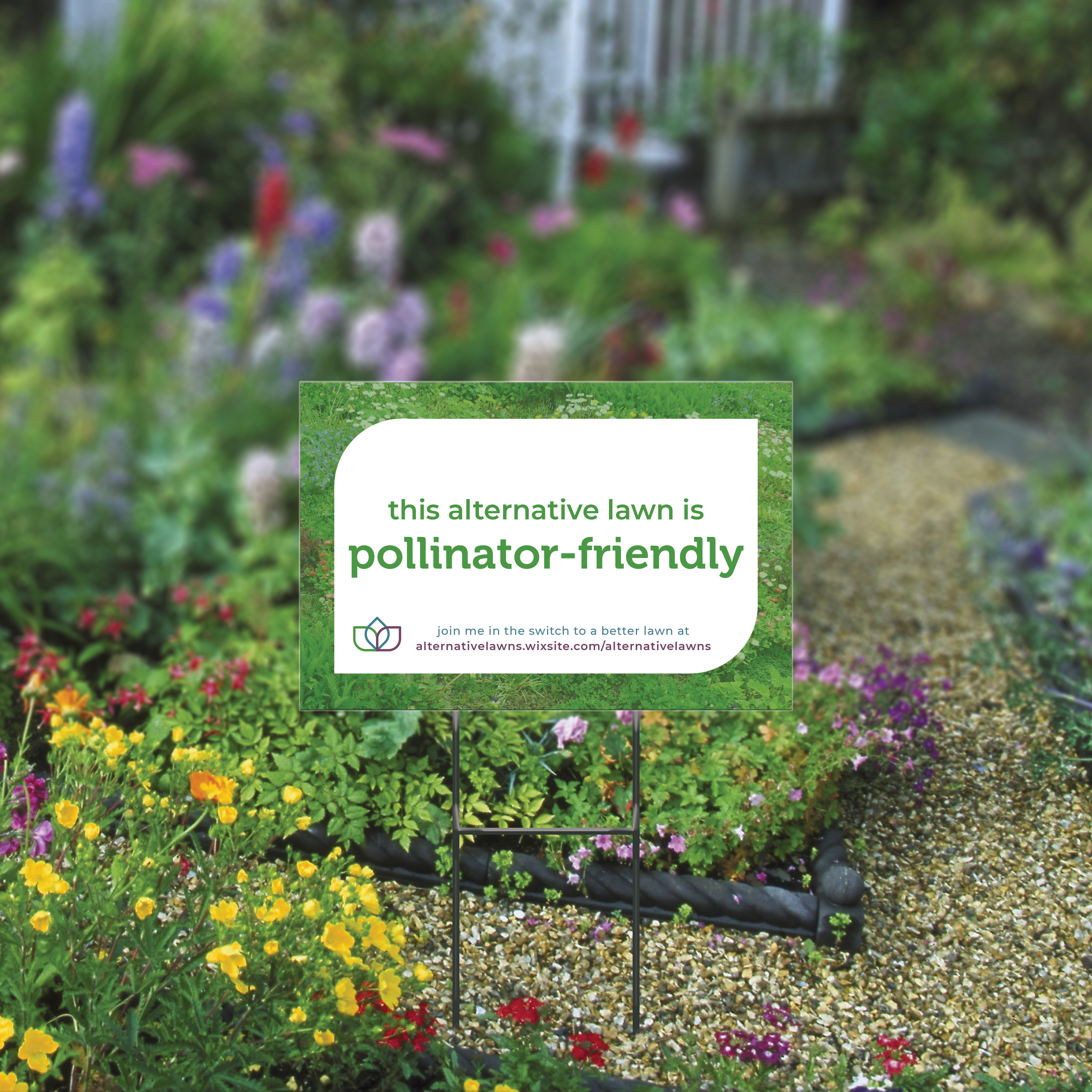
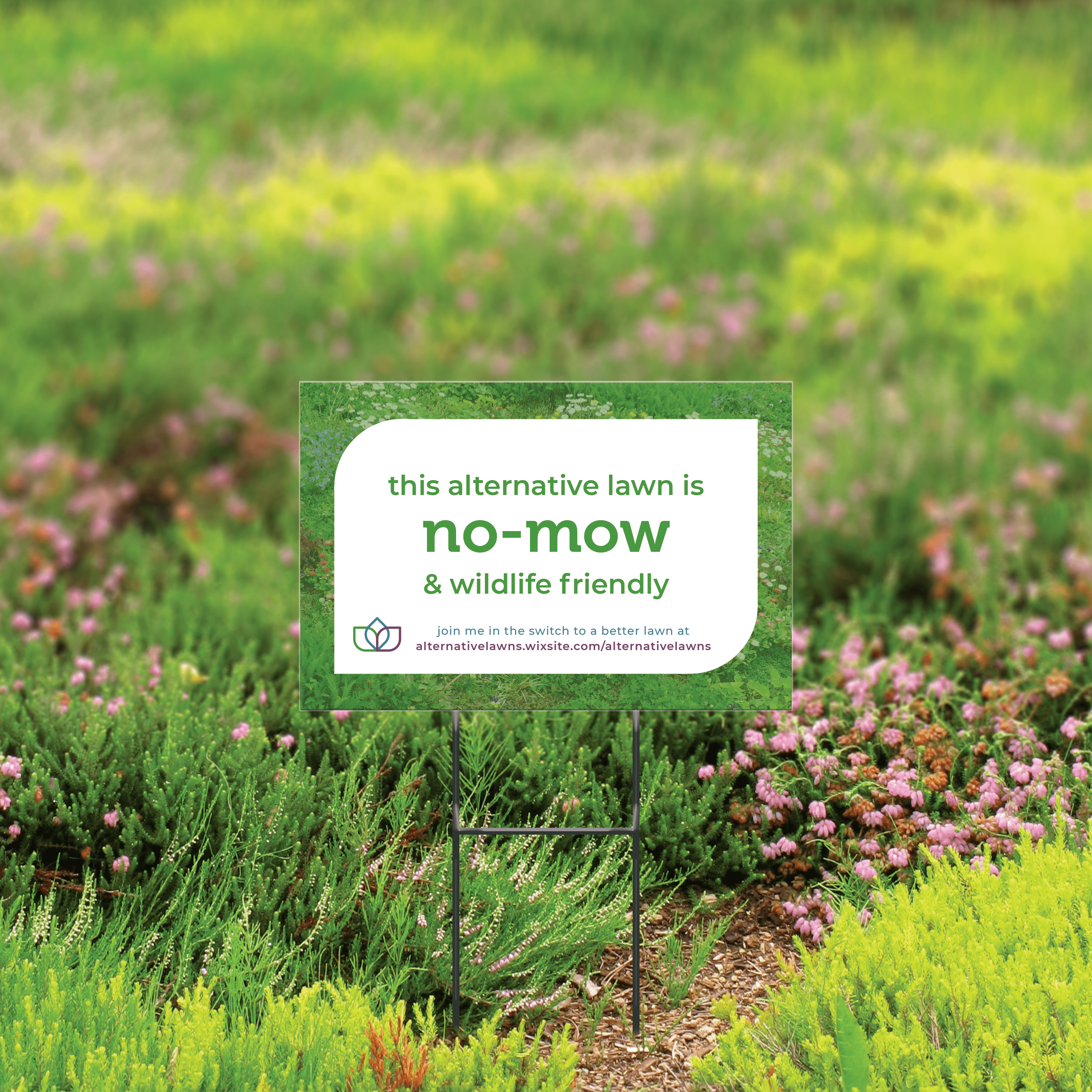
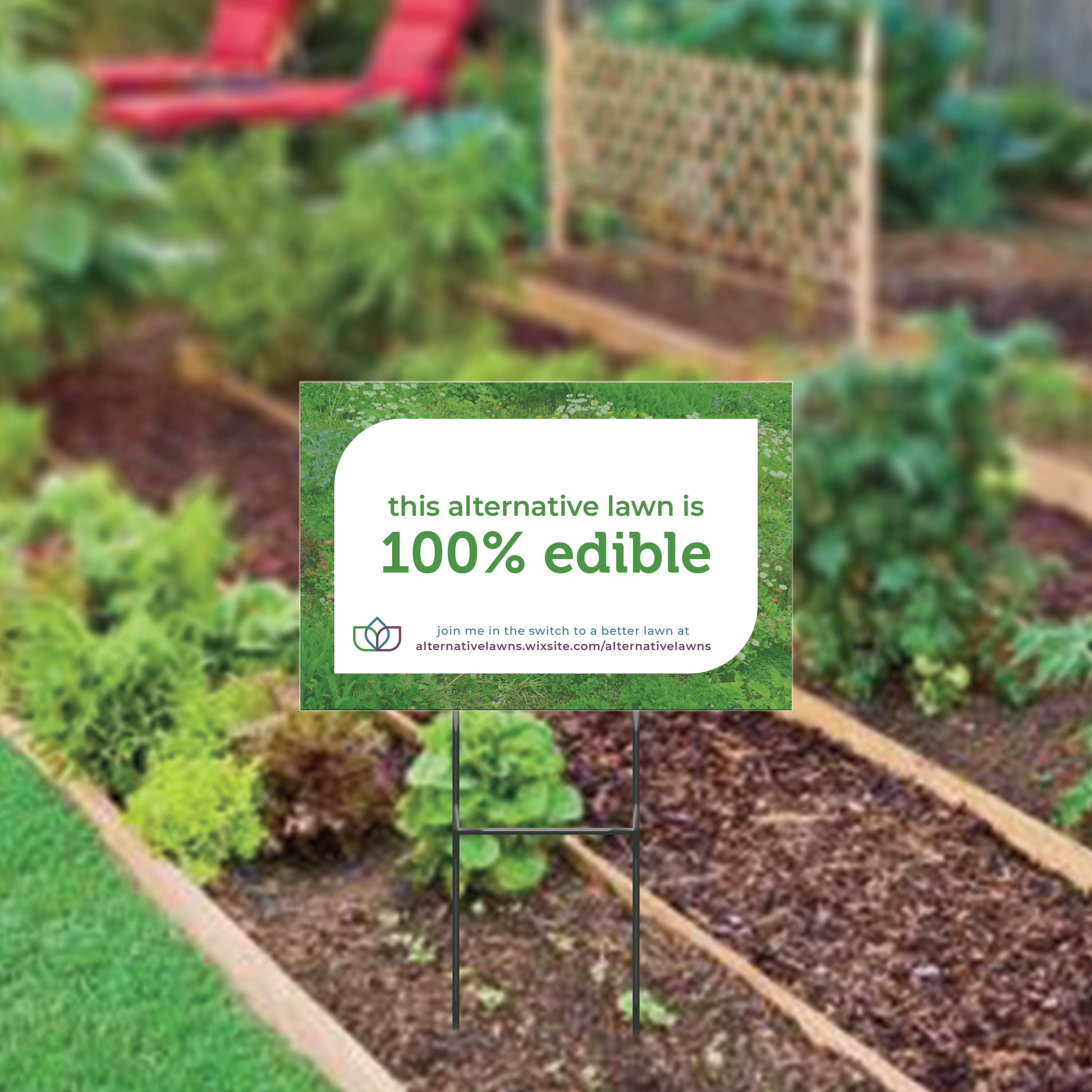
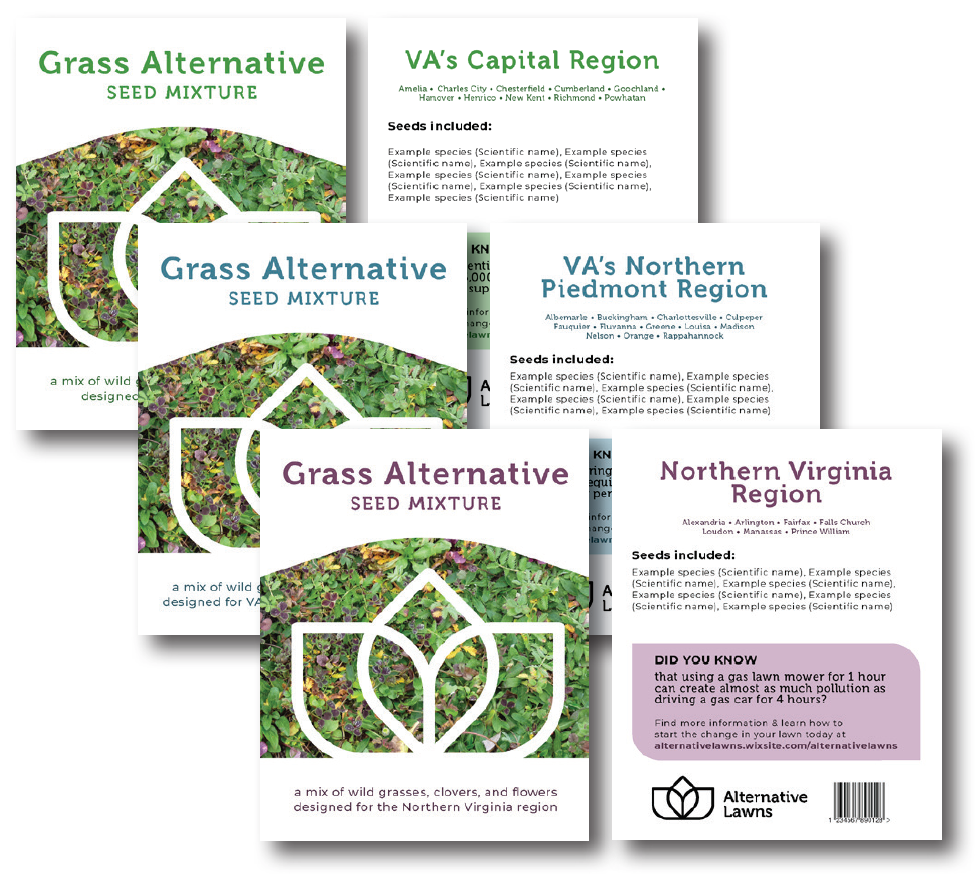
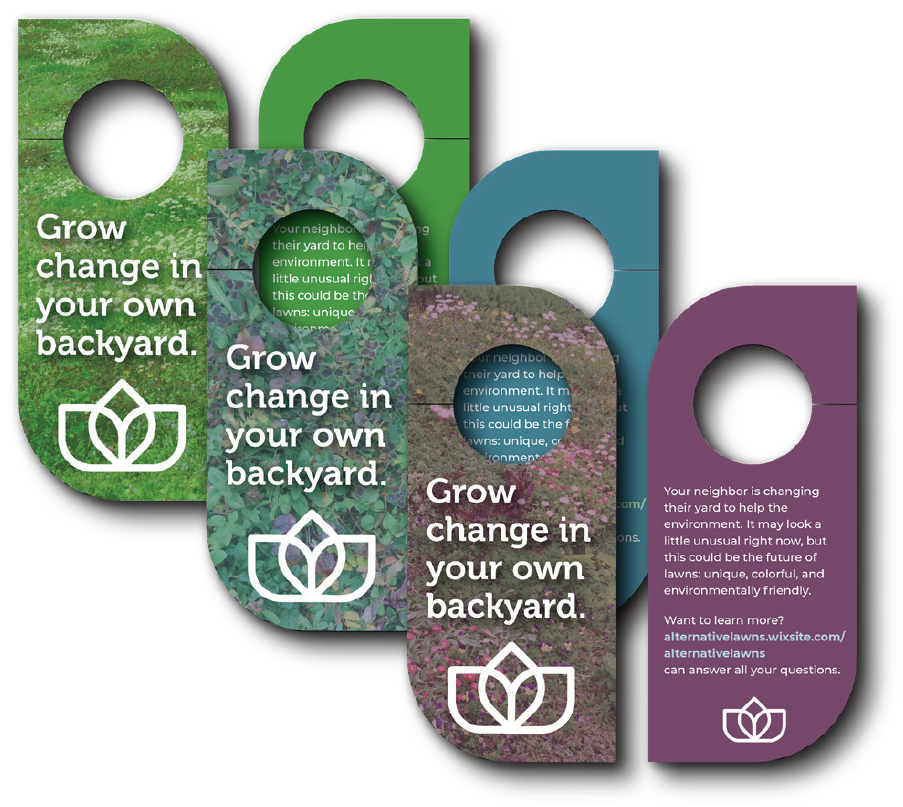
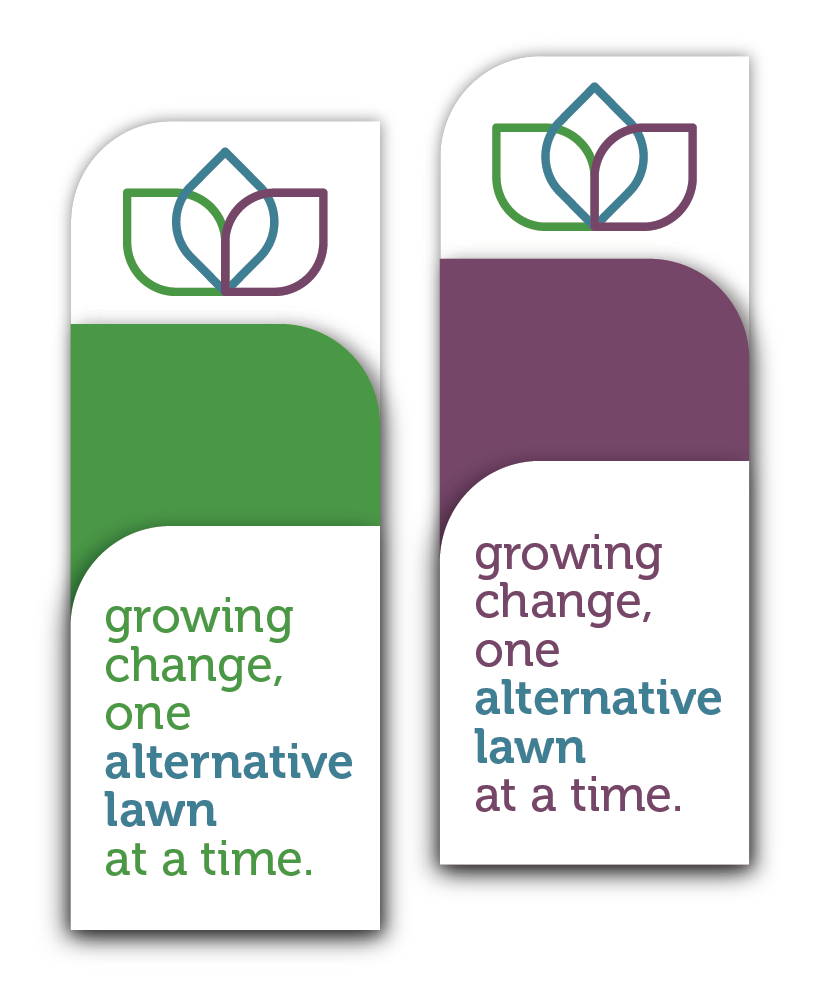
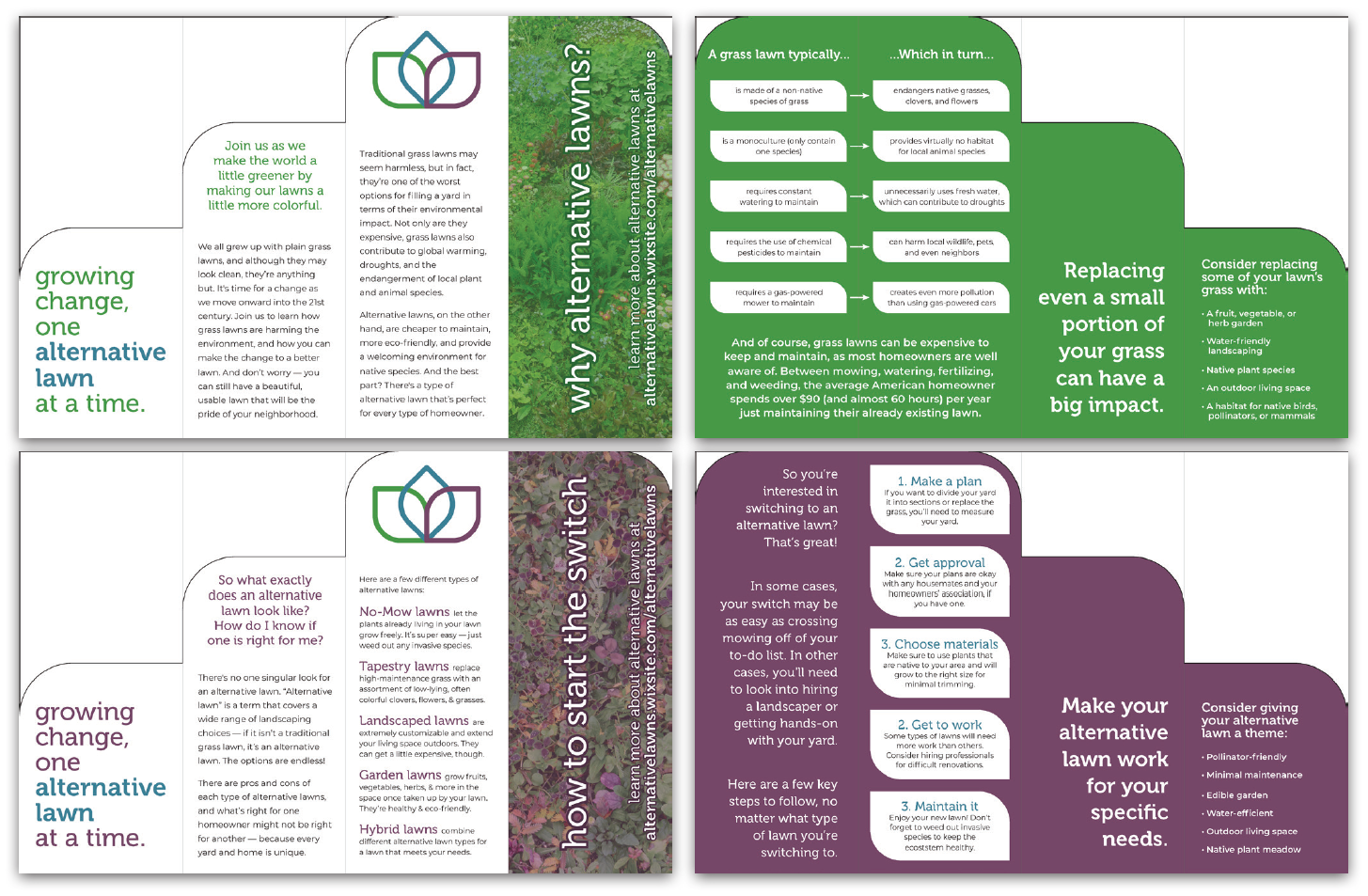
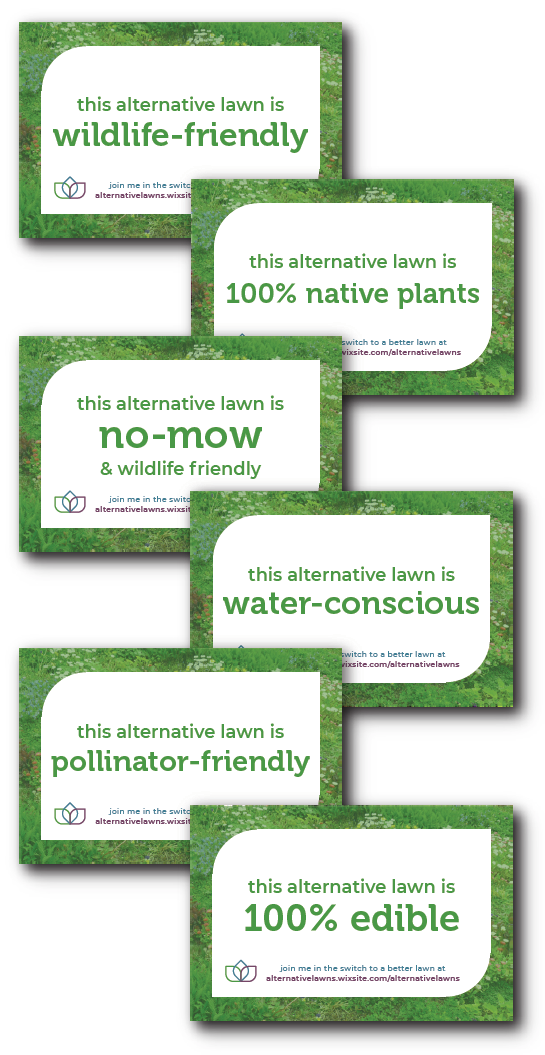
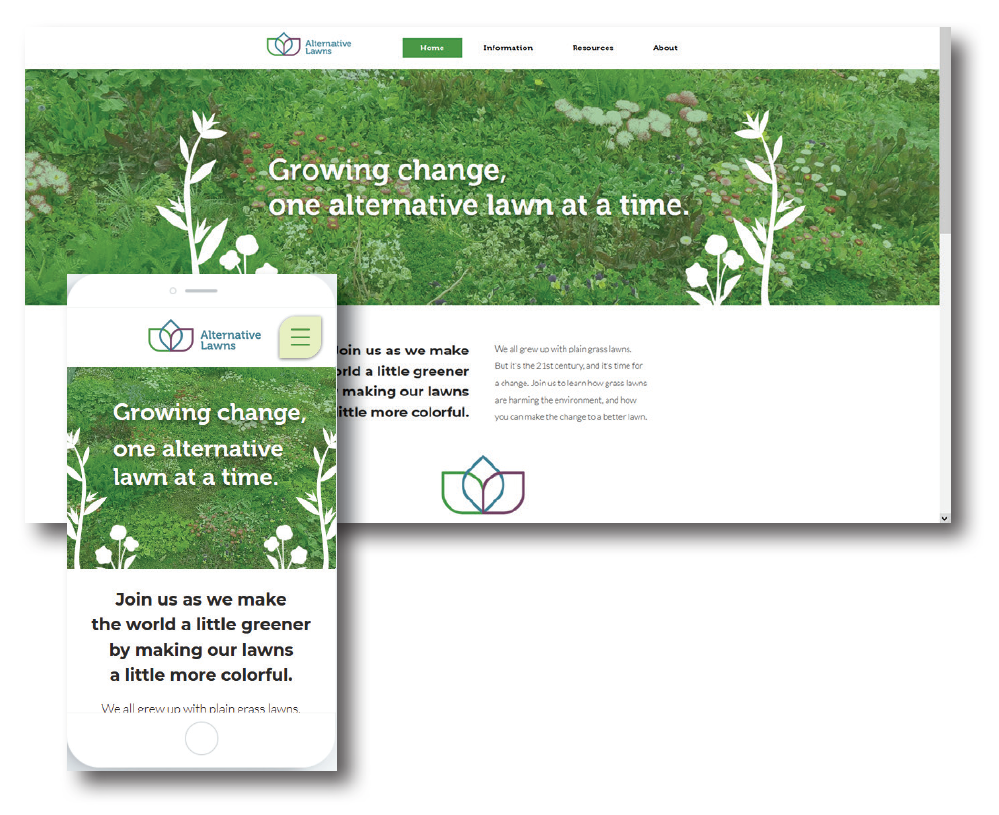
Comments